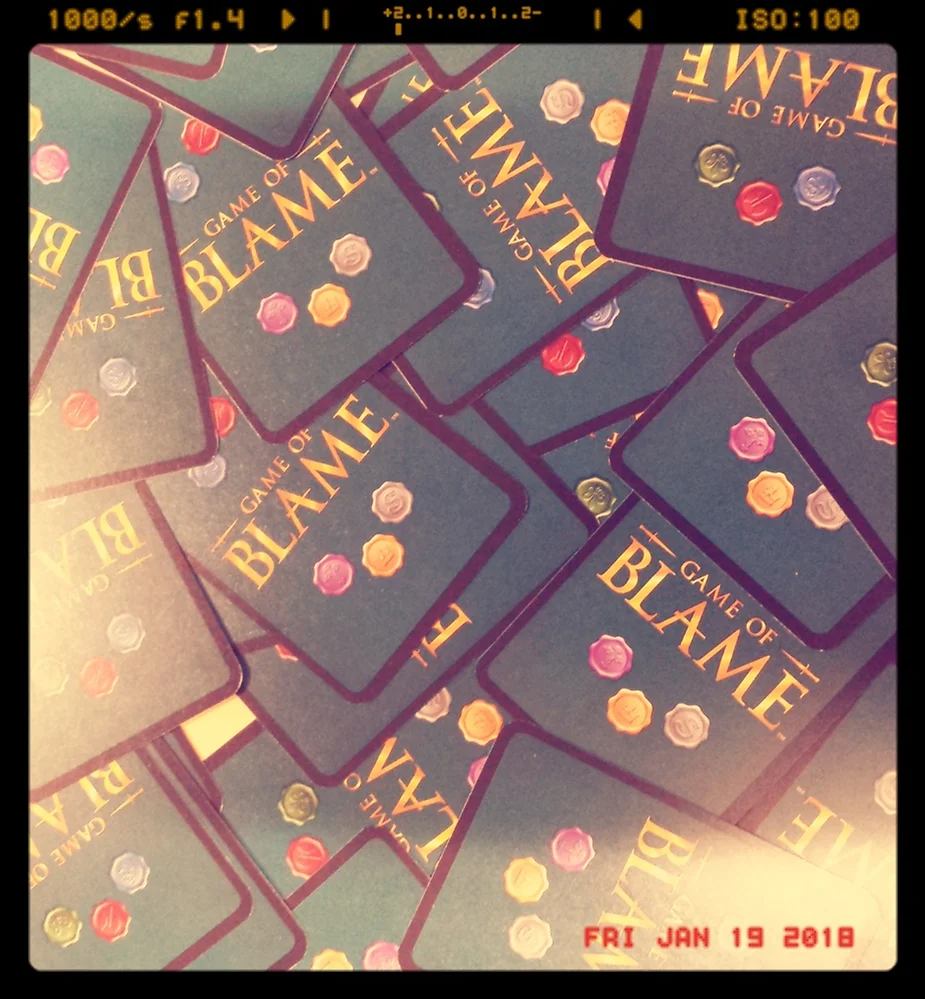
In fact it all depends on who you ask: May blames Corbyn; Corbyn blames the Tories; Trump blames Obama, or members of staff he sacked, or a book, or just a straw he’s clutching with his tiny baby hands. He also denies climate change, being racist and being secretly fat. And it’s not just people who are in the blame and denial game: rats deny they were to blame for the plague; a horse called Hashtags blames his rider for their defeat in a recent competition and the whole of Australia denies that it’s their fault the UK has flu. Denial and blame are endemic and it has been ever thus. In medieval times however, if you cast about blame in a random and unconvincing manner it might cost you your head.
The Game of Blame is a card game all about shirking your duty: the perfect gift for the politician or rat in your life. It is published by Warm Acre and was written and designed by Richard Wolfrik Galland (of Sabrewolf games).
The aim of the game is to avoid the Queen’s wrath by making sure other players get left with the issues that you were appointed to deal with but spectacularly avoided. Fail and you will be executed or (worse still according to some guy called ‘Romeo’)… banished.
Each player is assigned a role, each with its own special ability. So, you become one of these:
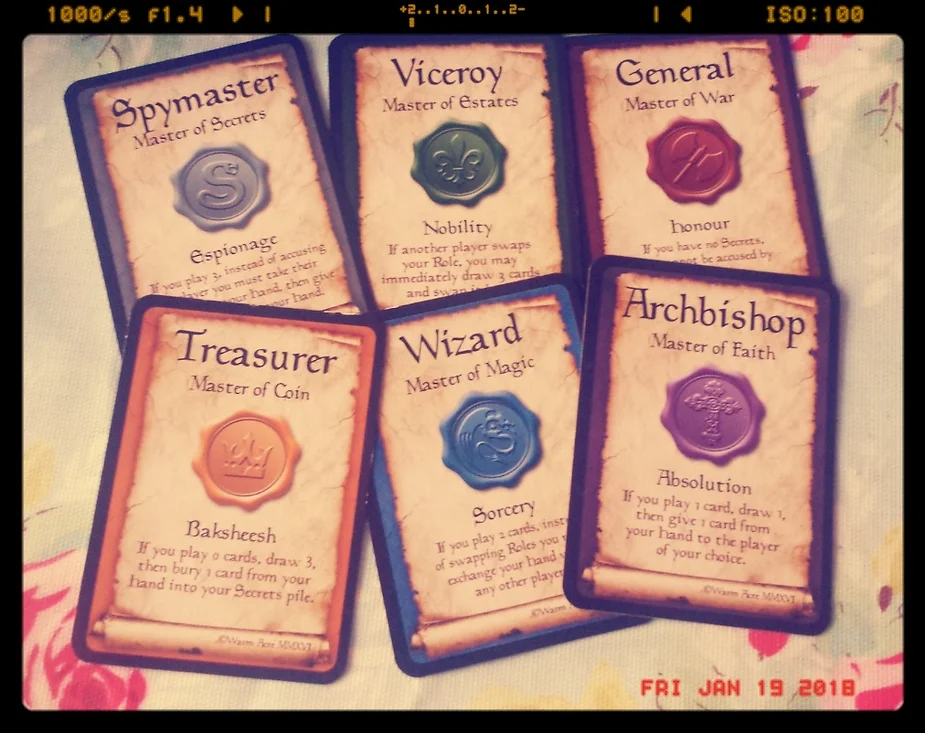
…but your role changes faster than the Trump administration so you’ll need to be on your toes.
Next, draw up issue cards – such as: backfiring battlewands, mutiny, plague and another holy war.
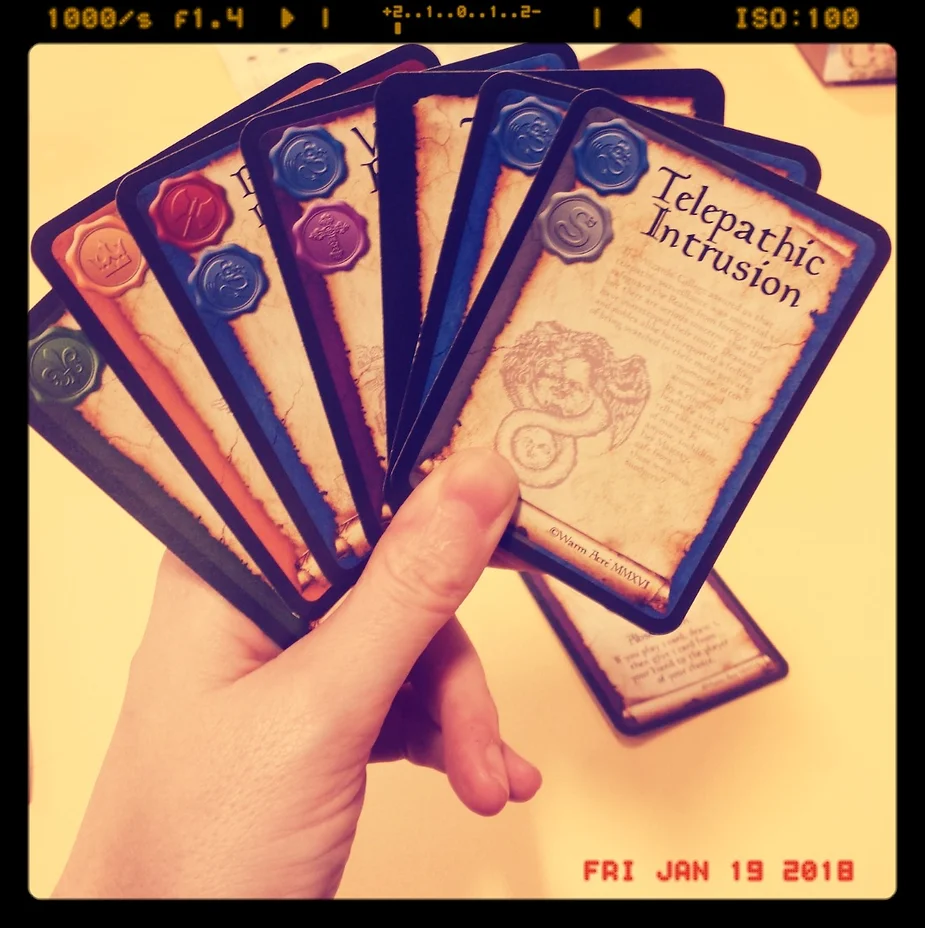
On your turn you can bury issues or add them to the blame pile. If you are forced to take the blame pile and you are the player whose role appears on the most cards, you can run no longer and must accept the blame. The game ends when the draw pile is empty at which point the cards in your hand that are labelled as your responsibility, along with any Treason cards you haven’t offloaded, (these count for a hefty 6 points) are added up and the highest scoring hand loses.
These are the basics – you can check out the full rules here.
By far my favourite thing about this game is how well written it is. The cards are sepia toned with medieval font which unfortunately makes them tricky to read but it is worth persevering. By contrast the summary cards, character cards and Treason cards use a much darker font and are easy to read. I would definitely like to see a darker font on the issue cards in future runs. The text is entertaining and well crafted. Here are a few of my favourite issues (to blame my erstwhile friends for- all’s fair in love, war, politics and taxes!)
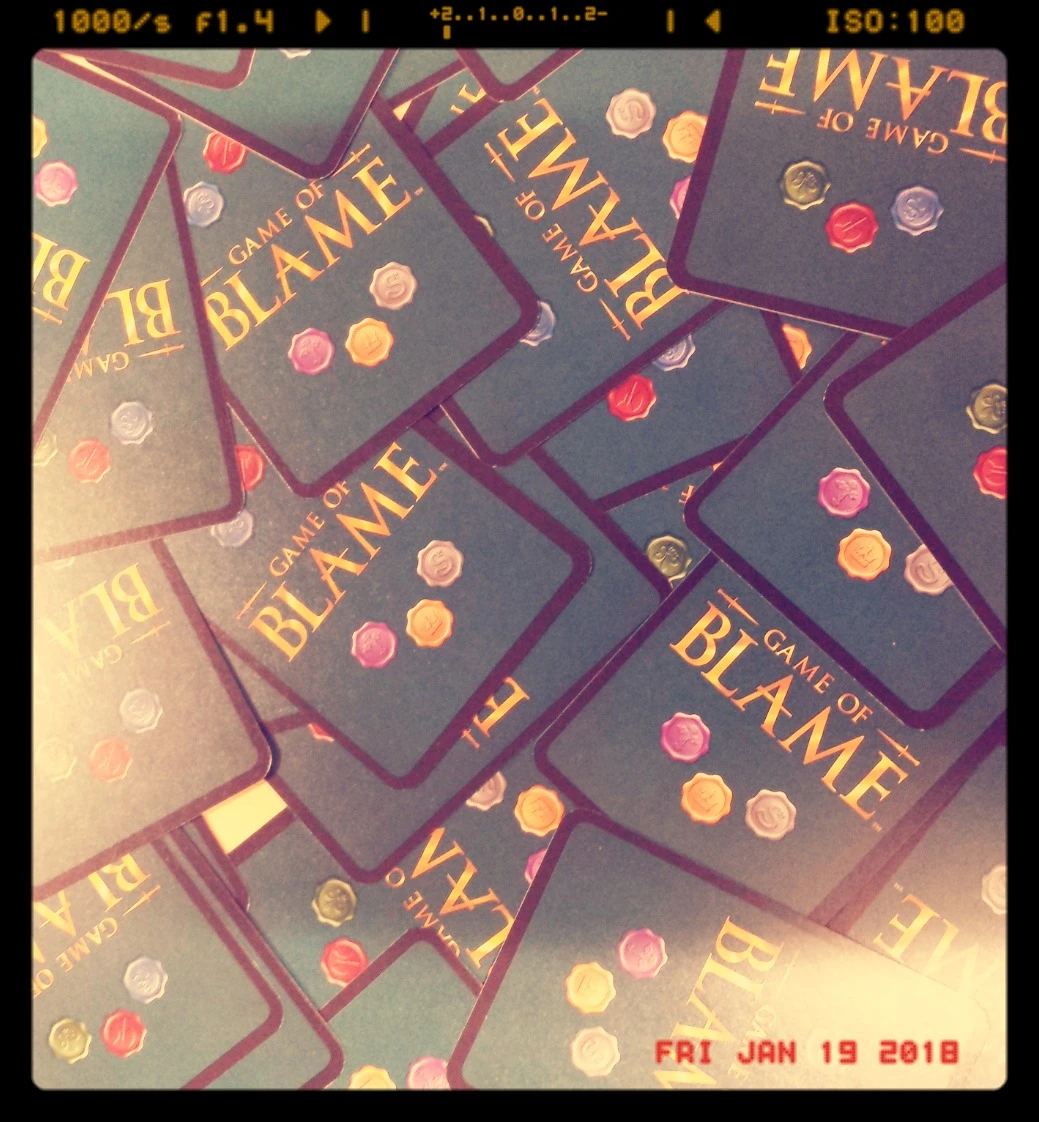
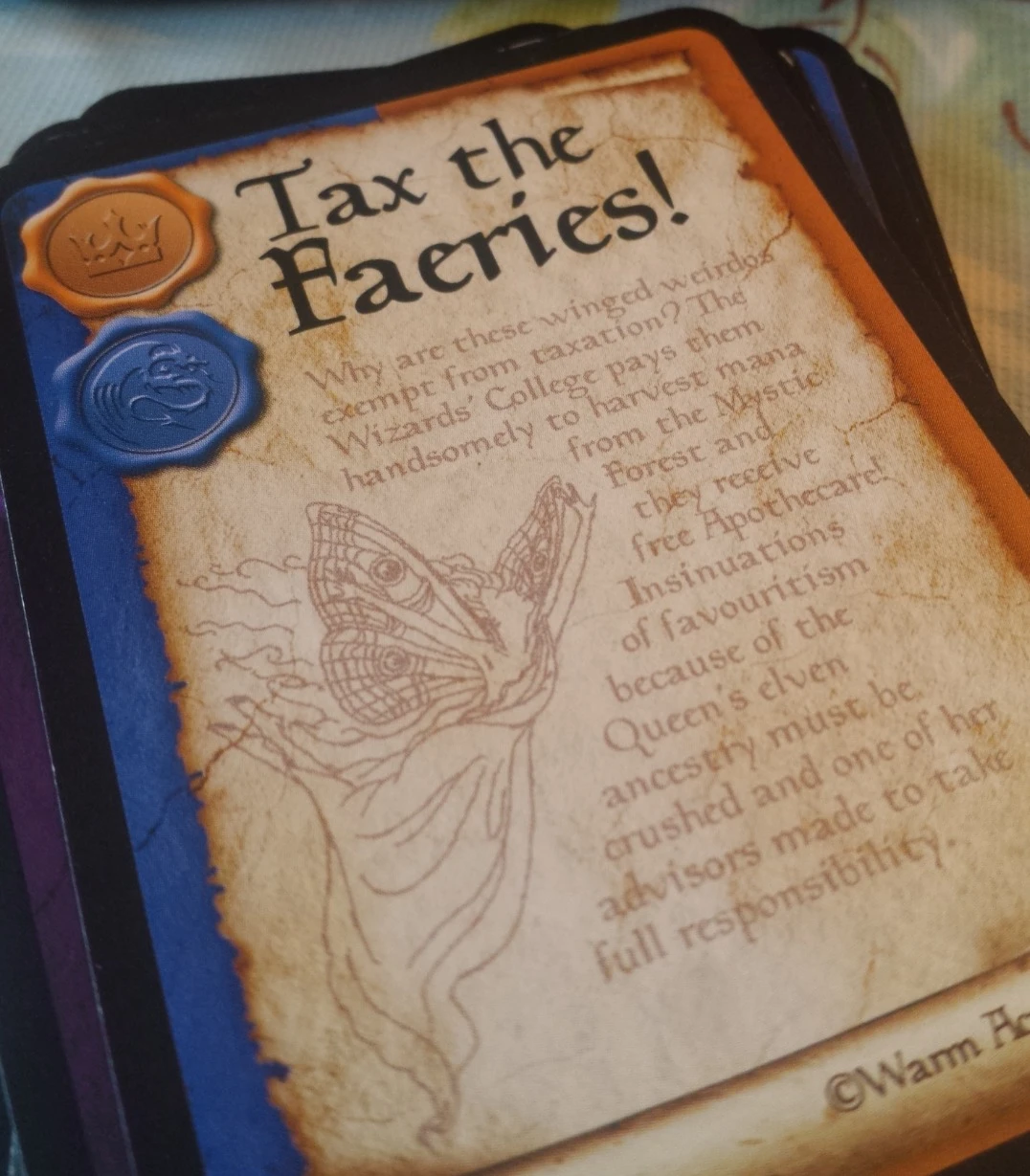
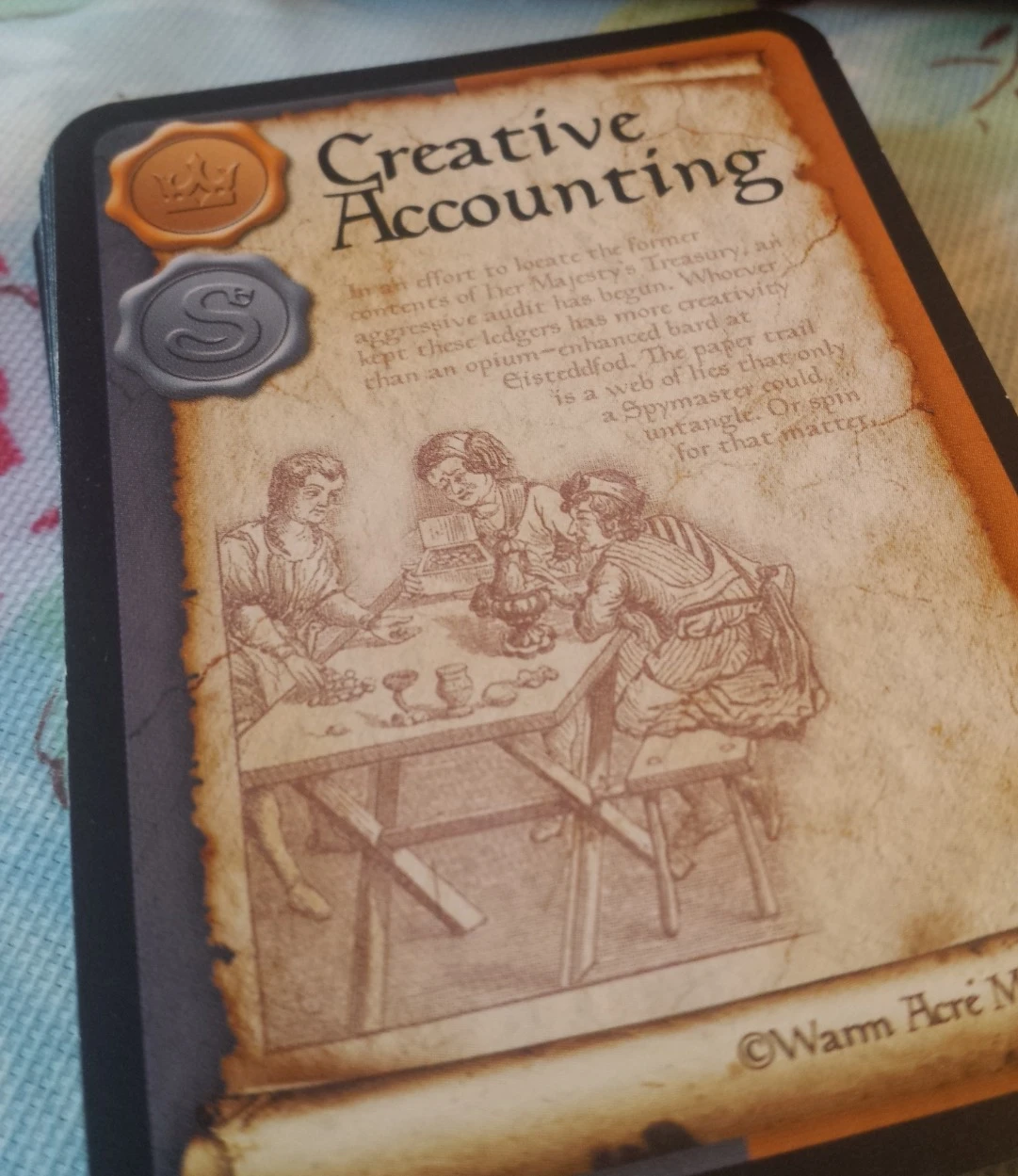

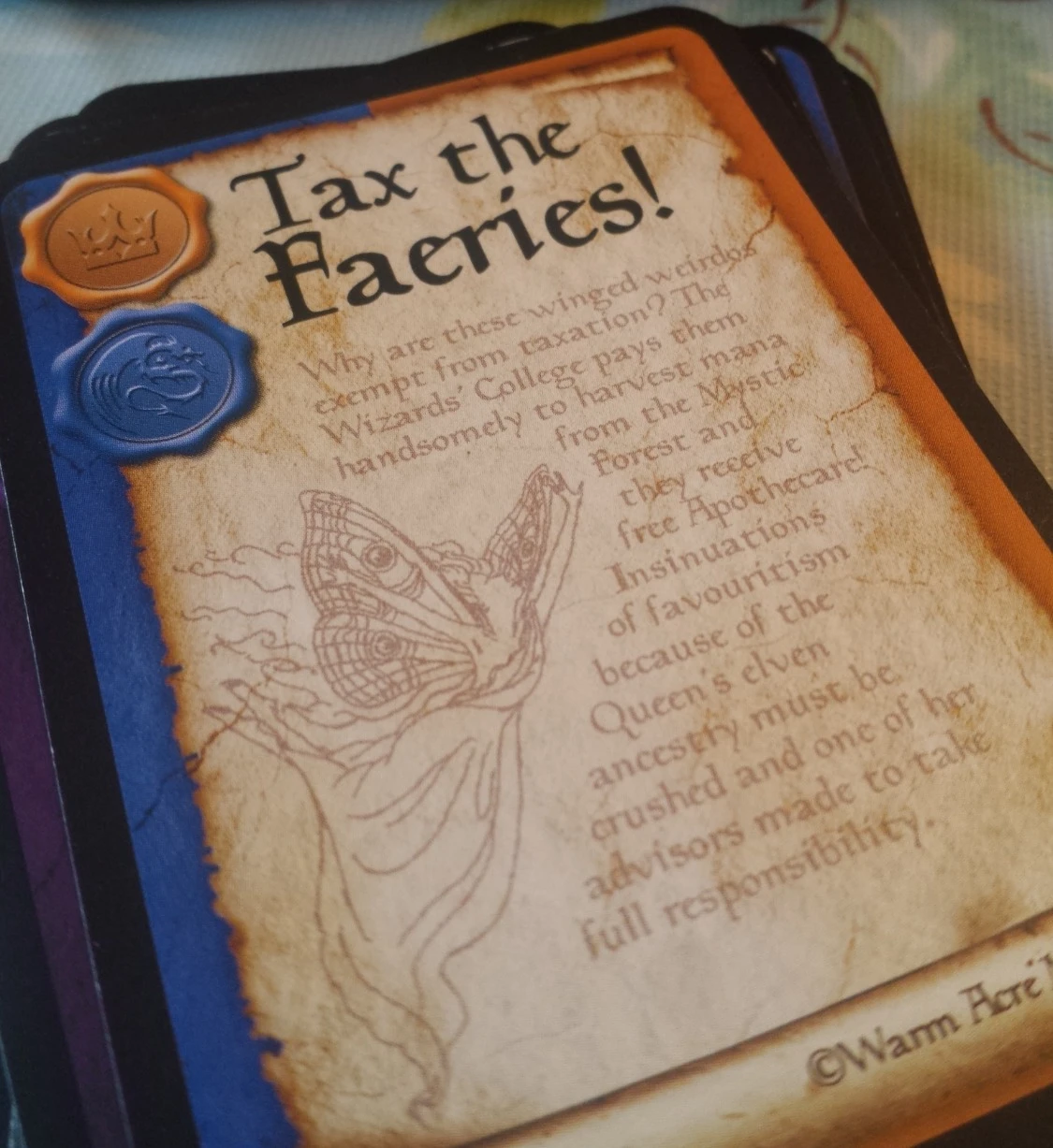
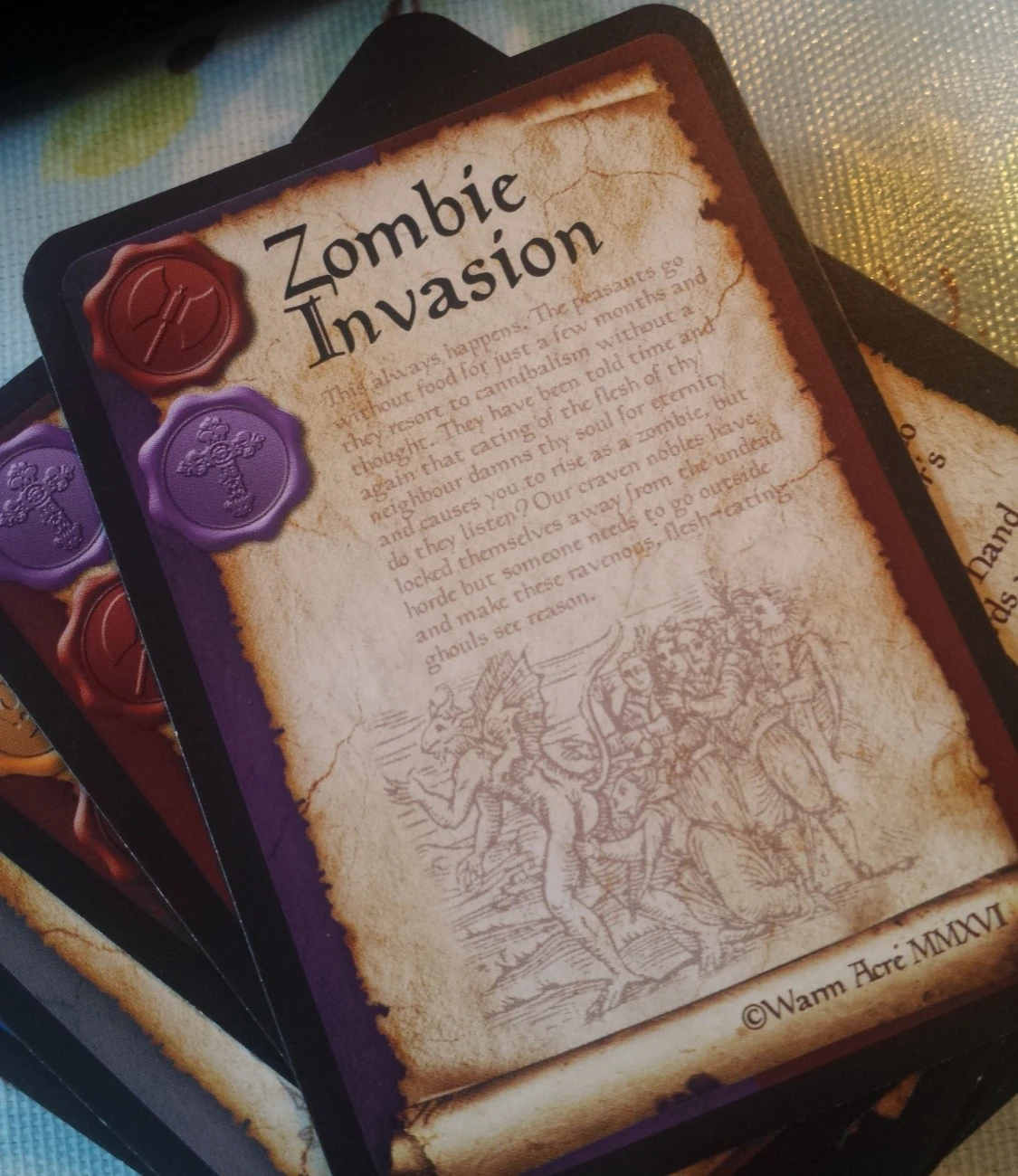
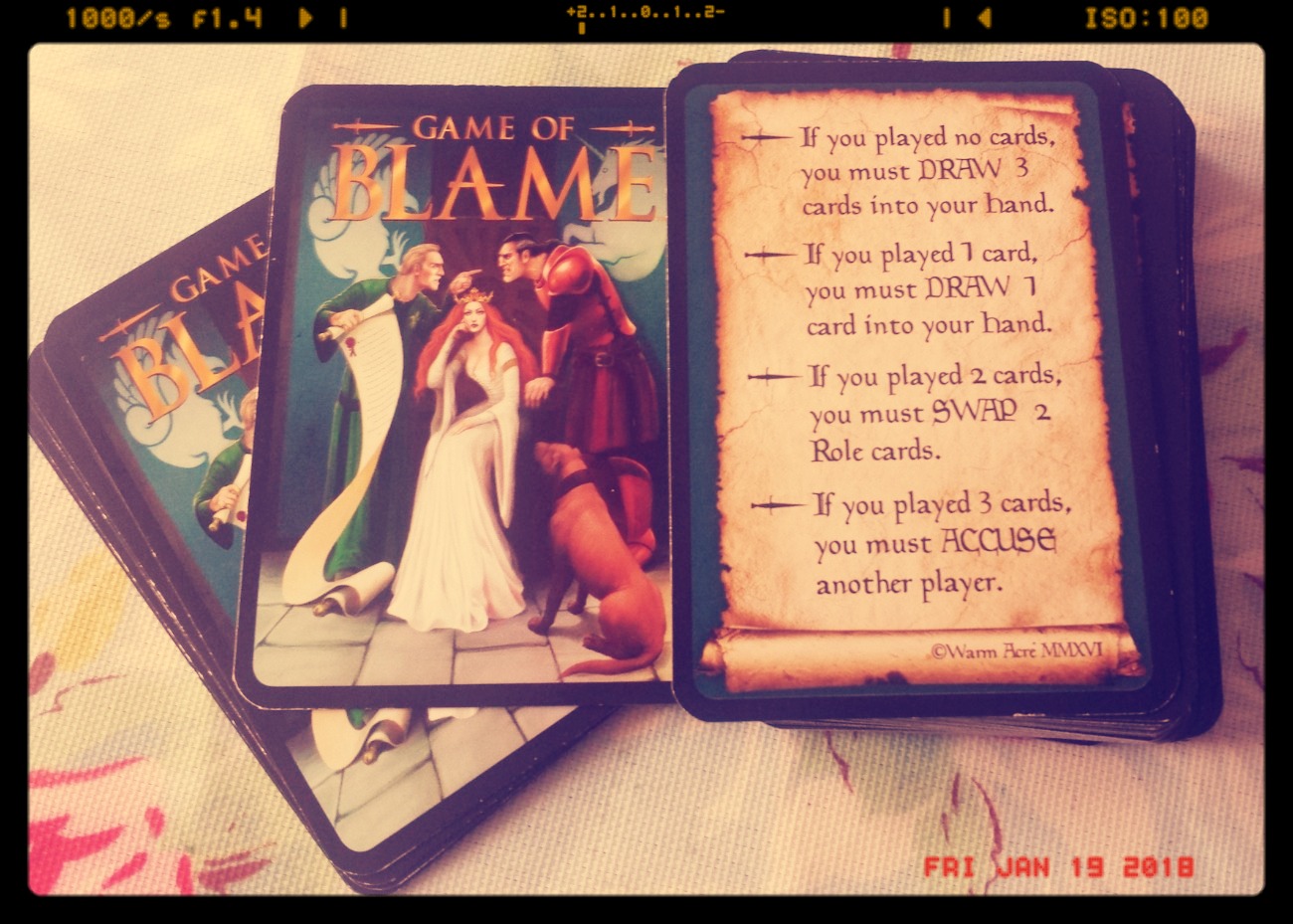
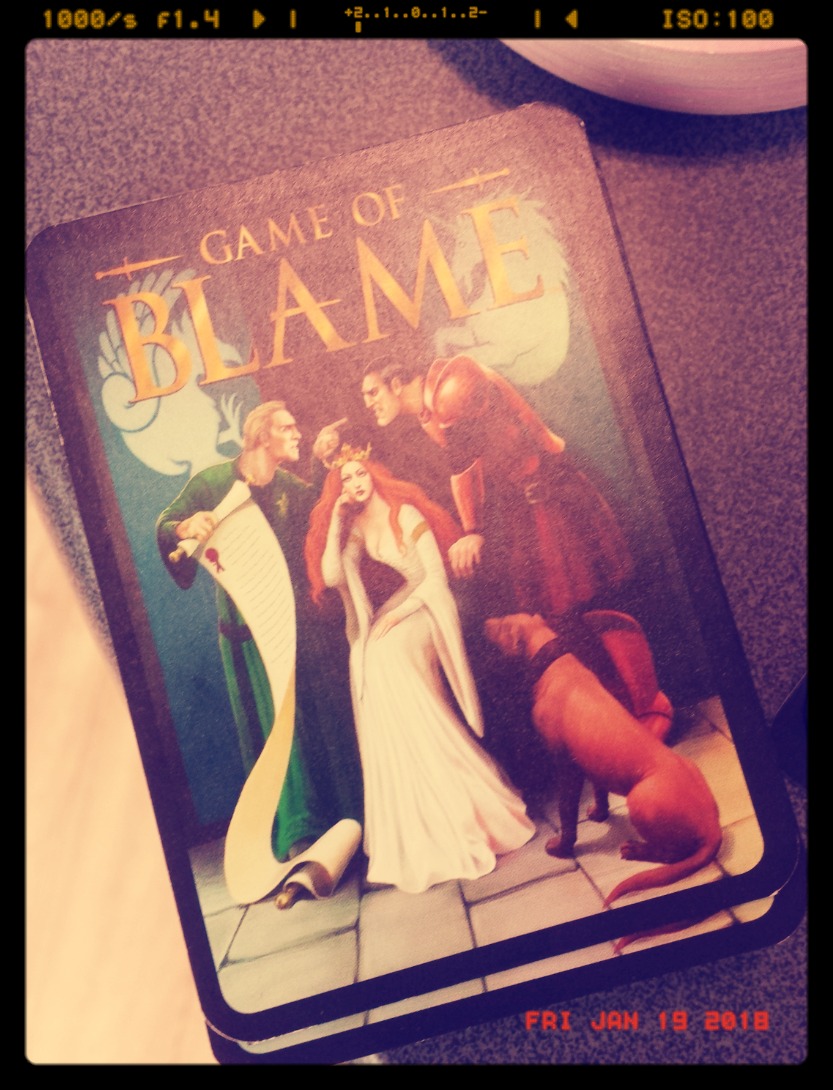
On your turn you play up to 3 cards. The number of cards you play dictates what happens next. There’s a turn summary card (I love those).
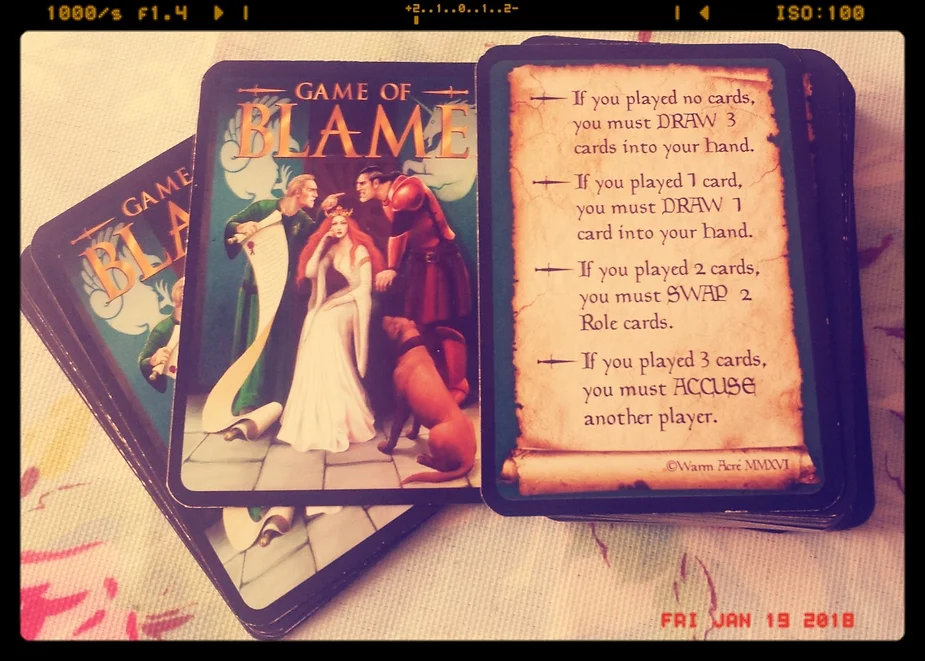
As a quick fun game this works really well but we have done a bit of adaptation. It says the game takes 30 minutes which is long enough but we were finding it often takes longer. Rounds will pass where the draw pile does not diminish. We have been experimenting with drawing a card each turn and for a really speedy round, taking the blame pile out rather than adding it to your hand. We have yet to finalise our house rules around this but we are enjoying playing around with it. The game has so much potential and we love it enough to fiddle about with the rules a bit – quite a compliment from us!
Do you have games where you have adapted or created house rules? Which ones and why?
I’d be interested to read about your experiences of adapting games, so comment below!


Add a Comment